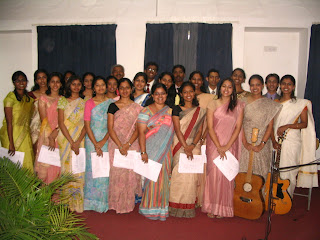This has been a question haunting me for years. Is innovation only for the clear and sharp minded ? What is the problem if I continue doing the usual monotonous things ? How will innovation benefit me, in my work, at my workplace ? Can it make me a better individual ? Does it help to motivate others to work better and smarter ?
I came across this simple definition to Innovation from www.johnstark,com - Innovation has occured when any aspect of a product, process or service provides an improved solution to a need. If the clerk in the bank where I go fir banking come up with forms which have been partially filled with dates for customers, I would say she has innovated. Incremental innovation is different from radical innovation. If one keeps a positive mind to innovate continuously, he/she can think of incremental innovation in he product or process or service he/she is carrying out.
We always have some need or the other, need for a product, a process to manufacture a product or carry out a task or service. We satisfy this need by some means by offering some solution. If we succeed in giving an improved solution to this need, then we are innovating.
Why do we innovate ?
The need for innovation is felt when we are under pressure to improve the output, reduce the costs, penetrate the market by offering a better product to the customer in terms of quality, reliability and maintainability, increased demand and less production capacity ( more items needed from a limited production capacity) , increased demand for a particular service ( more customers coming to a bank for withdrawing cash) and so on. Unless there is pressure we would not worry about innovation. Constant innovation by implementing new and updated technologies is another way by which companies are able to raise their output or productivity or reduce inputs.
Can Innovation be a way of life ?
Yes, very much. If we understand what are the steps involved in innovating, we can carefully follow those steps and begin our very first steps in innovation.
Different stages of Innovation
Need to innovate : In our daily life we come across many situations where we have felt the need to do things and have products performing better. This is the basic urge which is the moving force behind any process of innovation.
Idea creation - come up with a idea on how to improve the product or process or service from the existing method. Unless one is open to listening to other people, watching others perform, being appreciative of others, we cannot really get any good idea of innovation.Having good empathy of the customer need in a product, process or service will help one to be very effective in generating new ideas.
Development The next step involves transforming the idea into a practical proposition. This may involve thinking over and over again, regarding the inputs which go into it, the outputs, possible opposition, possible hurdles in implementation, top management support, public acceptance and so on. The idea will undergo major changes at this stages of iteration.
Commercialization Once the idea has been developed into a pratical idea, seeing through its implementation and potential benefits is very important. Because ideas can remain brilliant and still remain on drawing boards unless they are put into action. This is a very critical area.
George Easaw PhD



















